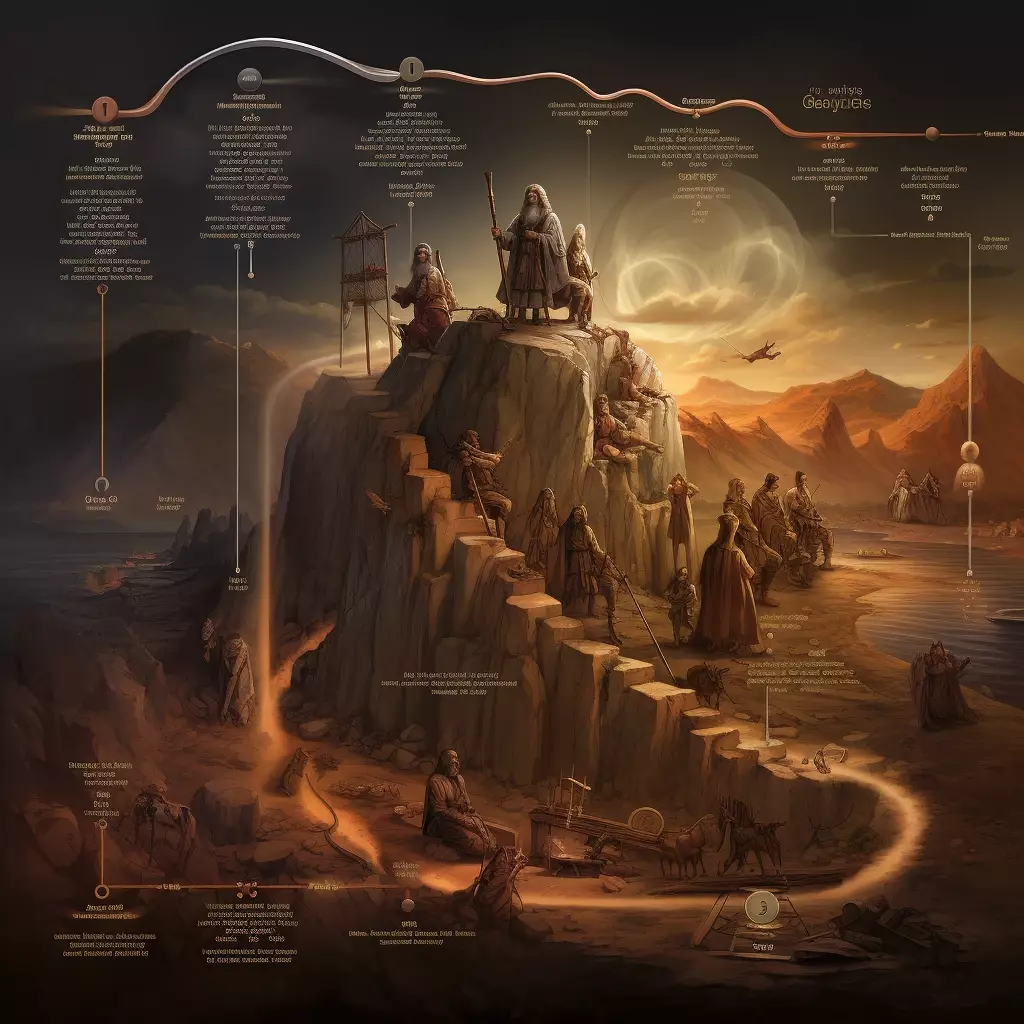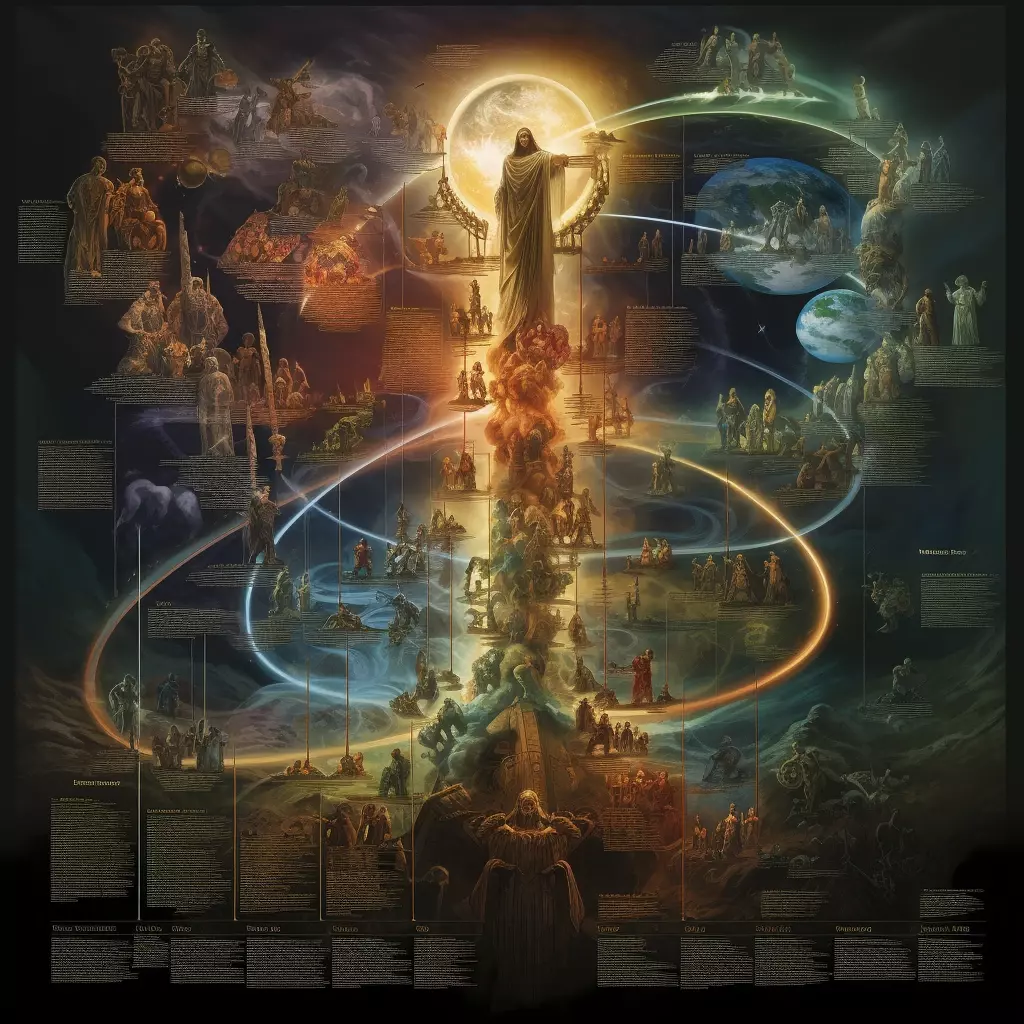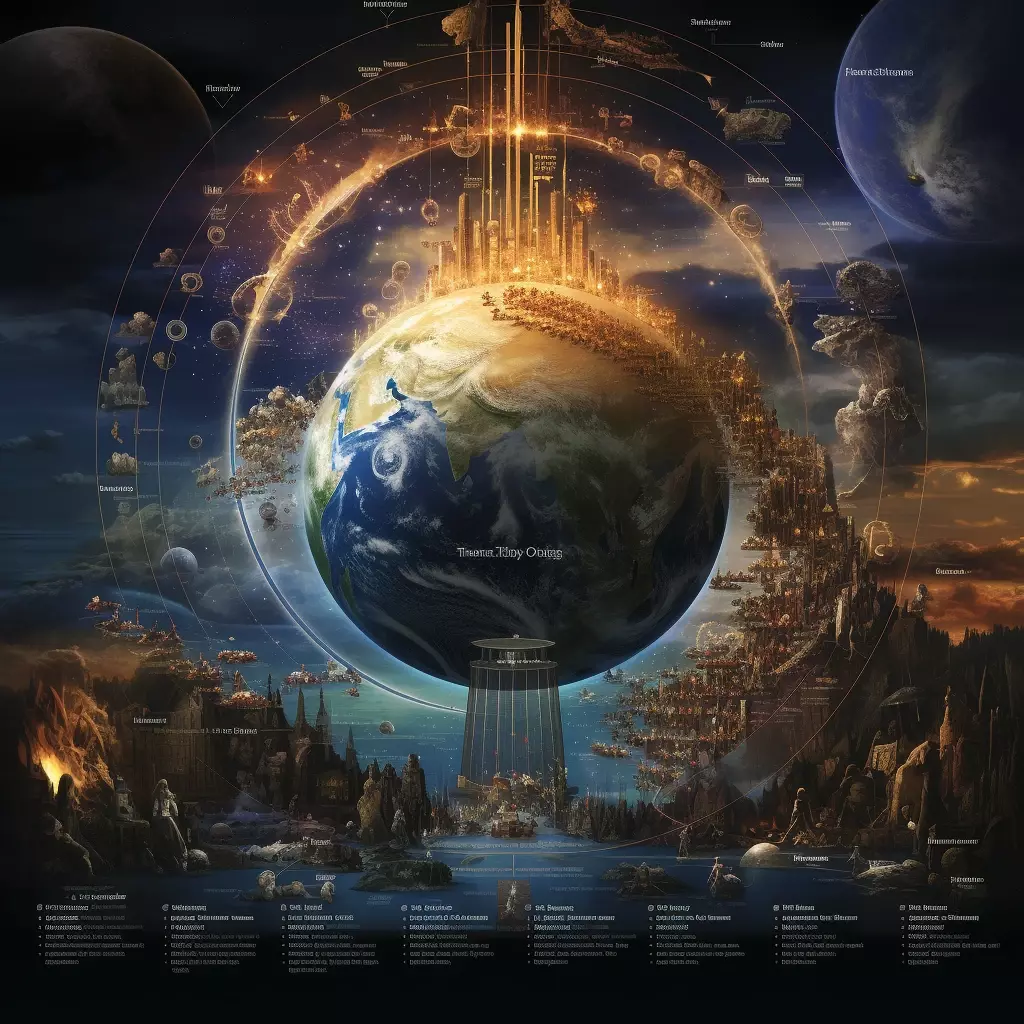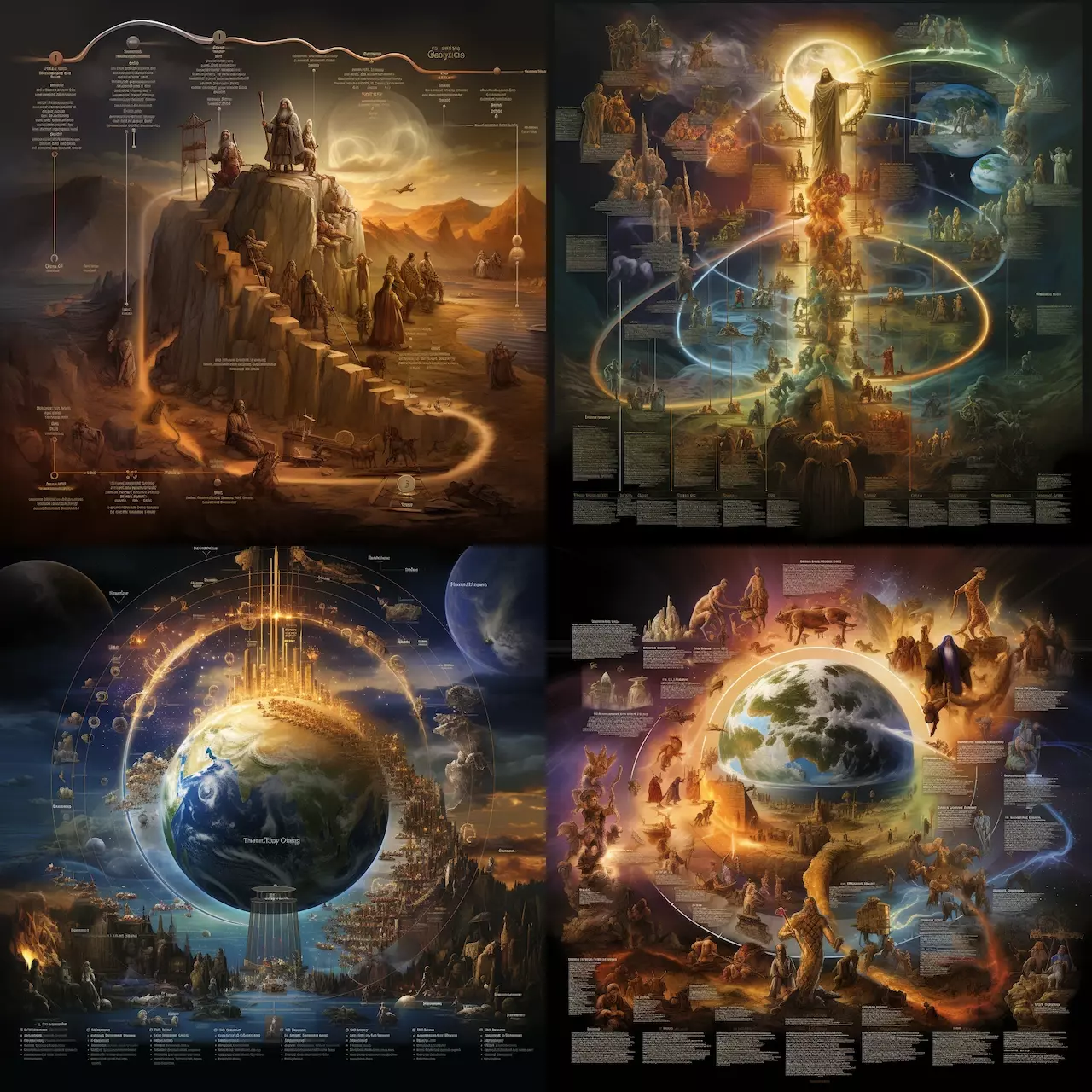Bible timelines are a useful tool for understanding the historical context of the Bible and the chronological order of events and stories mentioned in the text. These timelines provide a visual representation of the events and figures described in the Bible, and they can help readers to better understand the relationships between different events and stories.

Bible timelines typically begin with the creation of the world, as described in the book of Genesis, and they continue through to the end of the Bible, which is either the book of Revelation or the book of Malachi depending on which version of the Bible is being used.
Some Bible timelines include key events and figures from the Old Testament, such as the creation of the world, the flood, the Israelites' exodus from Egypt, and the reigns of key figures such as Abraham, Moses, and David. They also include key events and figures from the New Testament, such as the birth and ministry of Jesus, the spread of Christianity, and the reign of key figures such as Paul, Peter, and John.

Bible timelines also include information on the historical context of the Bible, such as the empires and kingdoms that were in power at the time the texts were written. They also include information on key historical figures such as Alexander the Great, Julius Caesar, and Nero, who are mentioned in the Bible.
In addition, Bible timelines can also include cultural and religious events that were happening at the time. For example, the Babylonian exile is a major event in the Old Testament, and it is important to understand the historical context that led to it.

Bible timelines can be found in various forms, such as on websites, in books, and in Bible study tools. They can be helpful for both personal study and for teaching in a classroom setting.
Overall, Bible timelines are a useful tool for understanding the historical context of the Bible and the chronological order of events and stories mentioned in the text. They provide a visual representation of the events and figures described in the Bible, and they can help readers to better understand the relationships between different events and stories.
